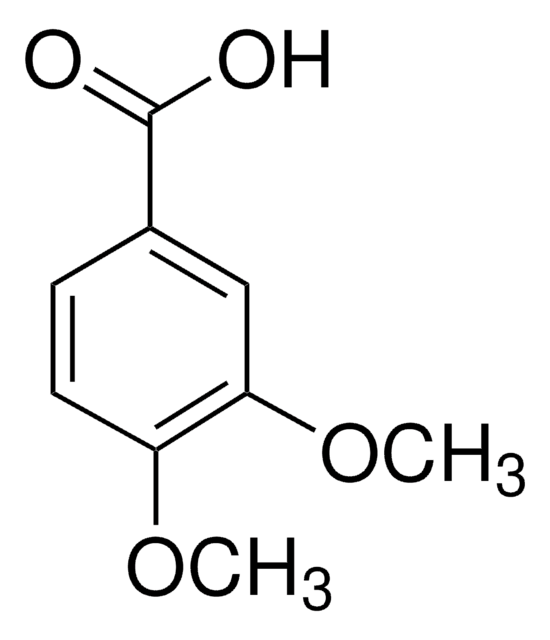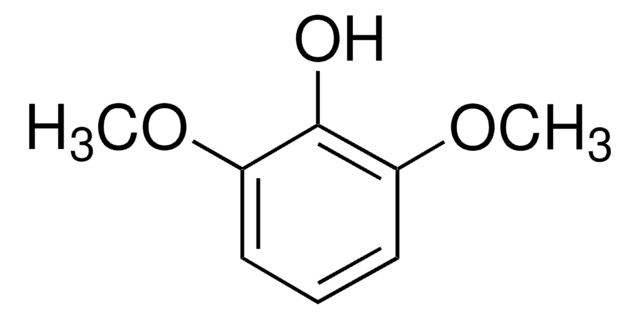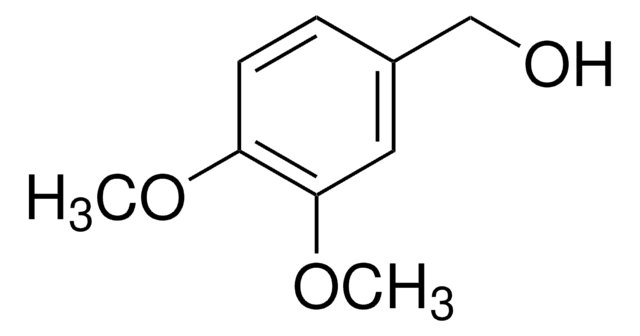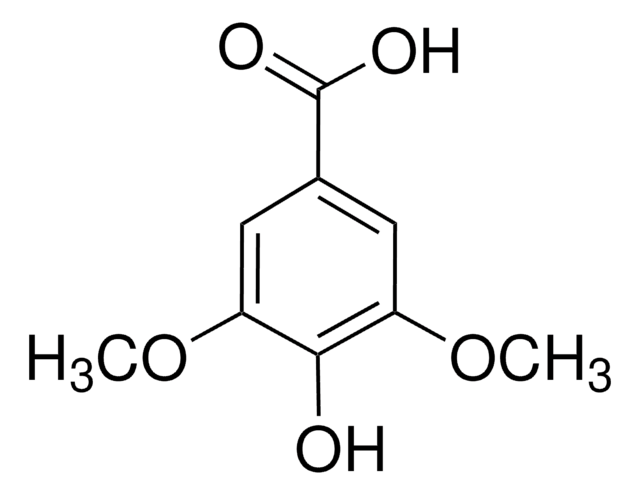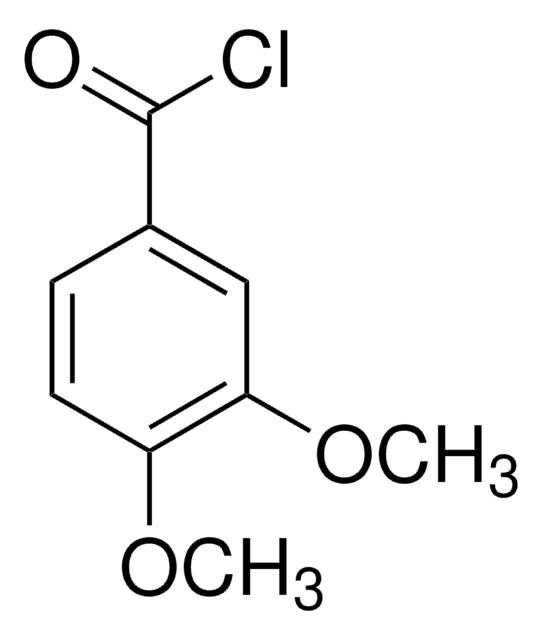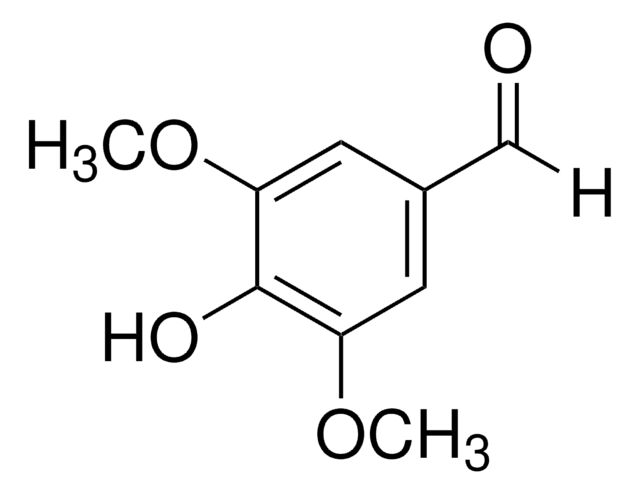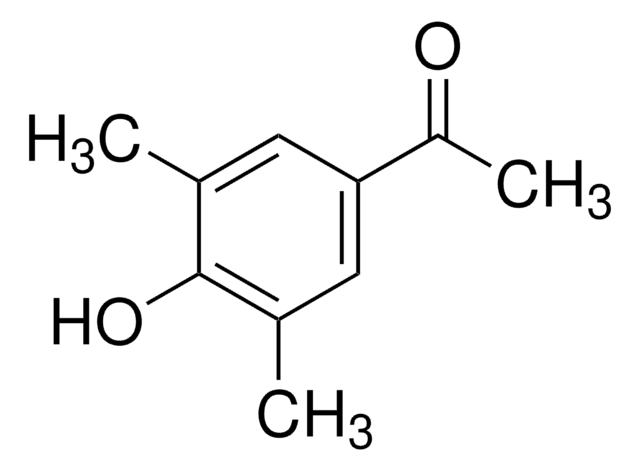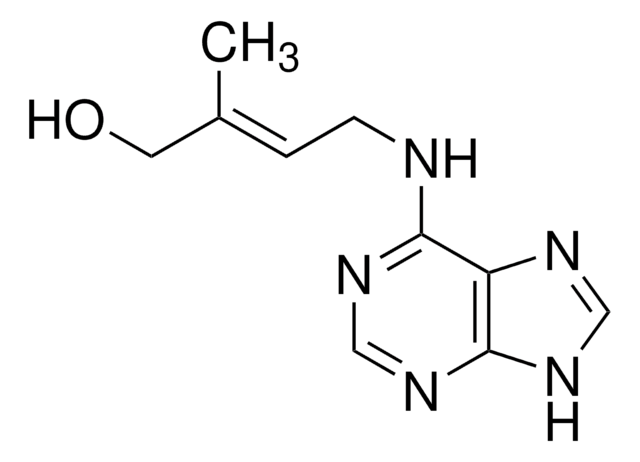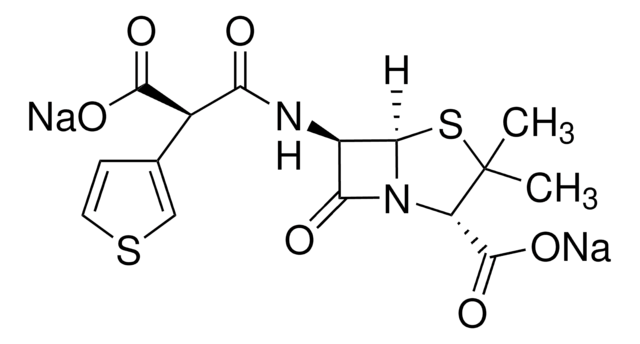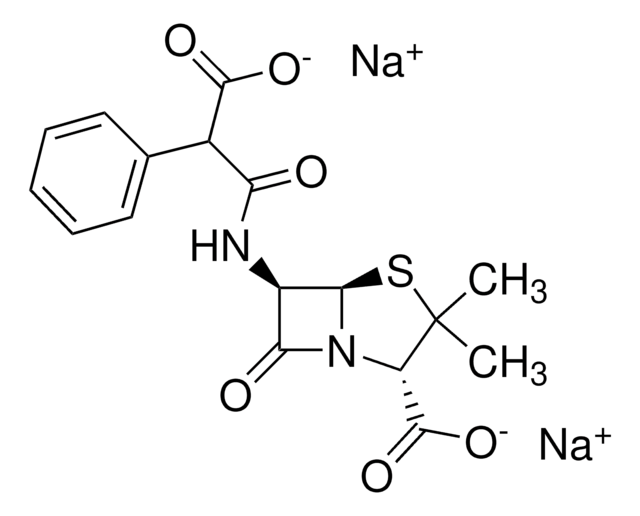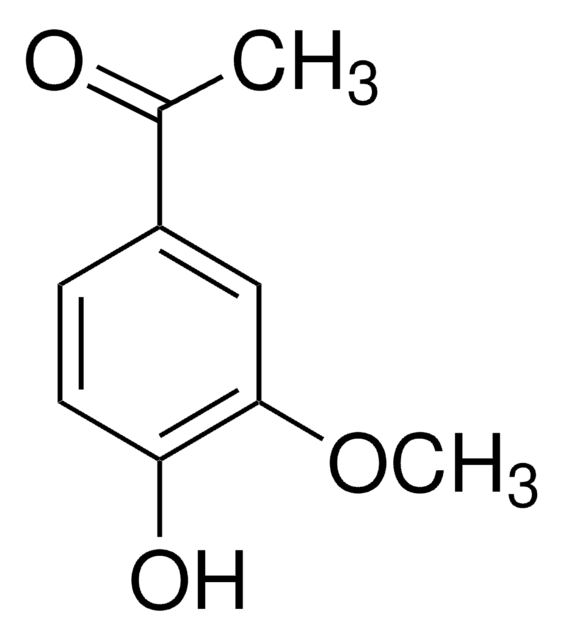推薦產品
化驗
97%
形狀
solid
mp
124-127 °C (lit.)
SMILES 字串
COc1cc(cc(OC)c1O)C(C)=O
InChI
1S/C10H12O4/c1-6(11)7-4-8(13-2)10(12)9(5-7)14-3/h4-5,12H,1-3H3
InChI 密鑰
OJOBTAOGJIWAGB-UHFFFAOYSA-N
尋找類似的產品? 前往 產品比較指南
應用
在农杆菌介导转化(AMT)方案中,3′,5′-二甲氧基-4′-羟基苯乙酮被用来激活 农杆菌 诱导肿瘤质粒(Ti)的毒力(vir)基因。
在农杆菌介导转化(AMT)方案中,3′,5′-二甲氧基-4′-羟基苯乙酮被用来激活农杆菌诱导肿瘤质粒(Ti)的毒力(vir)基因。
訊號詞
Warning
危險聲明
危險分類
Eye Irrit. 2 - Skin Irrit. 2 - STOT SE 3
標靶器官
Respiratory system
儲存類別代碼
11 - Combustible Solids
水污染物質分類(WGK)
WGK 2
閃點(°F)
Not applicable
閃點(°C)
Not applicable
個人防護裝備
dust mask type N95 (US), Eyeshields, Gloves
客戶也查看了
Agrobacterium-mediated transformation of friable embryogenic calli and regeneration of transgenic cassava.
Bull SE, et al.
Nature Protocols, 4(12), 1845-1845 (2009)
Johana C Misas Villamil et al.
Nature communications, 10(1), 1576-1576 (2019-04-07)
Ustilago maydis is a biotrophic fungus causing corn smut disease in maize. The secreted effector protein Pit2 is an inhibitor of papain-like cysteine proteases (PLCPs) essential for virulence. Pit2 inhibitory function relies on a conserved 14 amino acids motif (PID14).
Tomoyuki Nabeshima et al.
Frontiers in plant science, 8, 1940-1940 (2017-12-19)
Chrysanthemum stunt viroid (CSVd) was inoculated into two chrysanthemum (
Brendon Conlan et al.
Plant, cell & environment, 42(4), 1287-1301 (2018-10-31)
The folding and assembly of Rubisco large and small subunits into L8 S8 holoenzyme in chloroplasts involves many auxiliary factors, including the chaperone BSD2. Here we identify apparent intermediary Rubisco-BSD2 assembly complexes in the model C3 plant tobacco. We show
Haipeng Li et al.
Plant methods, 14, 50-50 (2018-07-07)
Genetically modified cotton accounts for 64% of the world's cotton growing area (22.3 million hectares). The genome sequencing of the diploid cotton progenitors Gossypium raimondii and Gossypium arboreum as well as the cultivated Gossypium hirsutum has provided a wealth of
我們的科學家團隊在所有研究領域都有豐富的經驗,包括生命科學、材料科學、化學合成、色譜、分析等.
聯絡技術服務